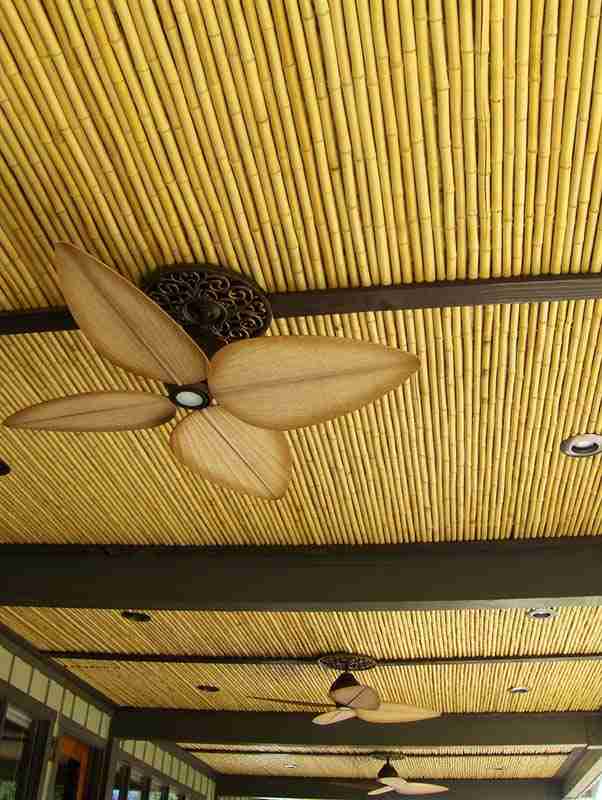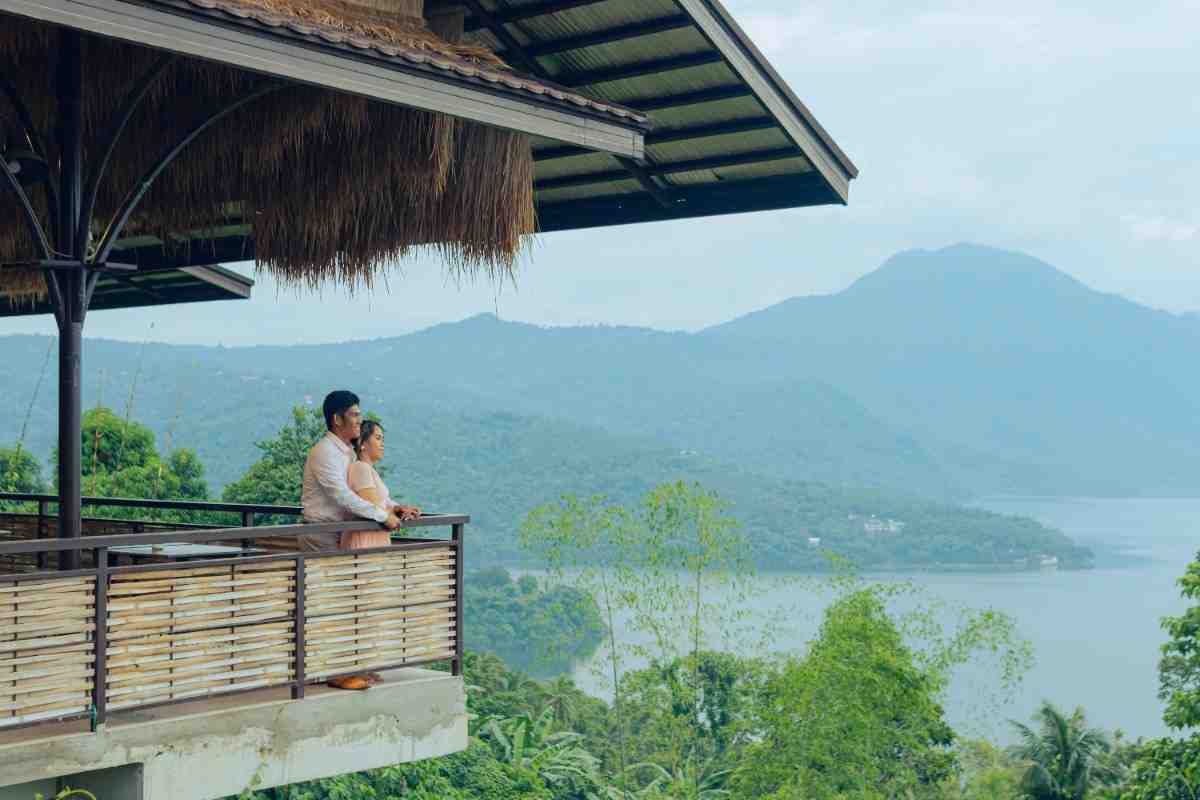
Tristan Ishtar
VP of Sales
Bamboo has the power to transform ordinary spaces into extraordinary ones. Once a traditional building material, it is now a sought-after design element in modern homes across America. With its natural beauty and versatility, bamboo poles serve as the foundation for countless residential applications—from structural features to decorative accents.
Whether you’re creating a tropical backyard retreat, incorporating sustainable materials into your home, or exploring eco-friendly DIY projects, selecting and using bamboo poles effectively is key to long-lasting, visually stunning results.
Choosing the Right Bamboo for Your Home Project
The success of any bamboo project starts with choosing the right type for your needs. Natural and artificial bamboo each have unique benefits, and selecting the right one can make the difference between a durable, low-maintenance feature and a short-lived installation.
Natural vs. Artificial Bamboo: What’s Best for Your Home?
Natural bamboo offers an authentic look with organic variations in color, texture, and grain. It works well indoors where moisture exposure is minimal, adding warmth and character to your space. However, for outdoor applications, natural bamboo has limitations.
“Natural bamboo will not last as long for outdoor applications, it’s going to decay and decompose,” explains Tristan Ishtar, vice president of sales at amaZulu.
Artificial bamboo, made from durable materials like nylon polyamide, is designed to withstand the elements while maintaining a natural appearance. “Artificial bamboo is a lot better option,” Tristan says, making it ideal for outdoor structures and long-term installations.
Climate Considerations
Your local climate plays a big role in bamboo’s longevity, especially for outdoor installations. In dry regions, natural bamboo lasts significantly longer than in humid or rainy climates.
“If you’re in dry parts of Texas or Arizona, natural can last you 10-15 years even outside,” Tristan notes. “If you’re in a place that gets rain and snow, the Tonkin rolled bamboo fencing is generally good for at least 2-3 years.”
Cost Analysis: Short-Term vs. Long-Term
Natural bamboo is more affordable upfront, making it appealing for budget-conscious homeowners. However, frequent maintenance and replacement costs can add up over time.
Artificial bamboo requires a higher initial investment but provides long-term value with its extended lifespan and minimal upkeep. For permanent outdoor features, the durability of artificial bamboo often makes it the more cost-effective choice.
Types of Bamboo Poles for Residential Use
Different bamboo species have unique strengths, appearances, and best-use cases. Selecting the right type ensures both aesthetic appeal and structural integrity.
Structural Bamboo Options
For load-bearing applications, solid or structural bamboo is the best choice. These poles are denser and more durable, making them suitable for furniture, support beams, and other weight-bearing structures.
These varieties offer superior strength compared to decorative options:
- Tre-Gai Bamboo – Straight-growing with thick walls, ideal for furniture and architectural elements.
- Guadua Bamboo – One of the strongest bamboo species, used for pergolas, garden structures, and fencing. “You can treat them just like dimensional lumber from Home Depot,” Tristan notes.
- Artificial Interlocking Bamboo – Made of nylon polyamide, available in multiple diameters and modular sections. “Depending on the diameter, now you can put them in a box, when they fit together they fit snugly and invisibly,” Tristan says. “Sometimes people want a 12 or 14 foot long pole, with these you can just piece them together and make whatever length you need.”
Decorative Bamboo Types
For non-load-bearing applications, decorative bamboo offers a more uniform look and is often more affordable:
- Tonkin Bamboo – Best for ceilings, wall treatments, or fencing. “If just putting it on a ceiling, roll out Tonkin because people won’t be bumping into it,” Tristan advises. “Sometimes the cheap stuff can work, so using Tonkin for the ceiling is fine, although it will crack all by itself.”
Creative Bamboo Pole Applications for Homeowners
Bamboo poles offer virtually limitless possibilities for enhancing your home’s aesthetic appeal and functionality. Their natural beauty and structural properties make them ideal for numerous creative applications throughout your living spaces.
Outdoor Uses
Garden Elements:
Bamboo poles excel as garden elements, providing both beauty and function in outdoor settings. Create elegant trellises for climbing plants, construct durable raised bed frames, or design distinctive plant stakes that complement your landscape.
Privacy & Boundaries:
Privacy screens and fencing represent another popular residential use for bamboo poles. Whether you’re defining outdoor spaces or creating secluded areas within your garden, bamboo provides a natural aesthetic that blends harmoniously with landscape elements.
Outdoor Living Structures:
Enhance outdoor living areas by incorporating bamboo into pergolas, gazebos, or shade structures. These architectural elements create defined spaces for relaxation and entertainment while contributing to your property’s aesthetic appeal.
Indoor Applications
Ceiling Treatments:
Transform interior spaces with bamboo pole ceiling treatments that create visual interest and texture overhead. Restaurants and upscale homes often use this technique to establish distinctive atmospheres. This application works particularly well with natural bamboo in controlled indoor environments.
Furniture & Décor:
Custom furniture pieces showcase bamboo’s versatility and unique character. From headboards to tables, shelving to chairs, bamboo poles can be incorporated into countless furniture designs that add natural elegance to your home.
Interior Accents:
Create distinctive interior accents using bamboo poles as room dividers, wall decorations, or window treatments. Their natural texture and warm tones complement various design styles, from tropical and bohemian to contemporary and minimalist.
Practical Solutions
Utility Concealment:
Concealing household utilities represents an ingenious functional application for bamboo poles. “You can use it to hide conduit,” Tristan says. Apply this same principle to cover unsightly elements in your home, from plumbing pipes to electrical conduits.
Specialty Enclosures:
Specialty enclosures for pets or plants demonstrate bamboo’s adaptability to unique residential applications. “We had someone who used it for his lizard’s terrarium,” Tristan recalls. The natural appearance of bamboo creates appealing environments while satisfying the homeowner’s desire for attractive design elements.
Transform Your Home with amaZulu’s Expert Bamboo Solutions
Ready to enhance your home with the natural beauty of bamboo? Whether you’re planning a backyard project, a unique interior feature, or a full-scale renovation, amaZulu, Inc. offers premium bamboo products and expert guidance.
With over 22 years of experience sourcing high-quality natural and synthetic bamboo, their team helps homeowners select the right materials for their climate, project, and budget.
Contact amaZulu today to explore their extensive inventory of bamboo poles and tropical building materials. Their expert consultants will guide you through product selection, installation best practices, and creative design solutions to bring your vision to life.

Tristan Ishtar
VP of Sales
With over 11 years at amaZulu, Tristan brings deep expertise in tropical building materials and a customer-focused approach. He serves as a trusted consultant for architects and designers, providing expert guidance without high-pressure sales.





